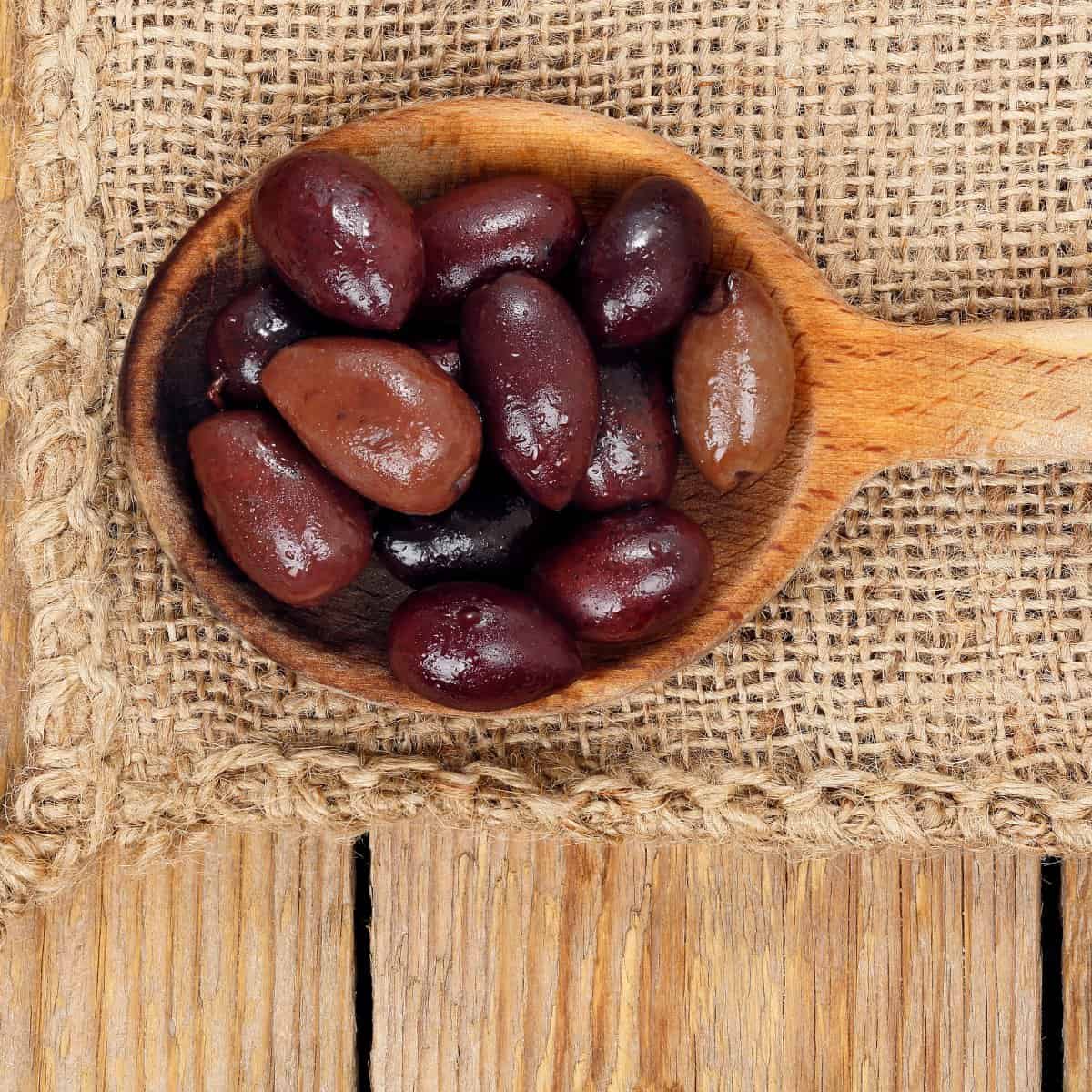Kalamata Olives: From Harvest to Preparation
Kalamata olives are a variety of olive grown in the Kalamata region of Messenia in the Peloponnese peninsula of southern Greece. They’re known for their distinct dark purple-black color, oval shape, and large size.
In this article, I’ll tell you everything you need to know about Kalamata olives, from their history to health benefits and uses in cooking.


Check out our new cookbook
Bitemybun's family recipes with complete meal planner and recipe guide.
Try it out for free with Kindle Unlimited:
Read for freeIn this post we'll cover:
What Makes Kalamata Olives So Special?
Kalamata olives are known for their distinct dark purple to black color and oval shape. They are larger than most other olives, measuring about 2-3 centimeters in length.
Origin and Growing Conditions
Kalamata olives are named after the city of Kalamata in Messinia, Greece, where they are primarily grown. This region is located in the central part of the Peloponnese peninsula. Kalamata olives grow on trees that are intolerant to cold temperatures and susceptible to Verticillium wilt. However, they are resistant to knot disease, which affects other fruit trees.
Texture and Flavor
Kalamata olives have a fleshy texture and a rich, fruity flavor. They are typically harvested in the late fall and early winter months when they are fully ripe. The pit in the center of the fruit is easy to remove, making them a popular choice for snacking and cooking.
Nutritional Value
Kalamata olives are not only delicious but also packed with health benefits. They are a good source of iron, calcium, copper, vitamin A, vitamin E, magnesium, phosphorus, and potassium. These nutrients can help improve bone health, boost the immune system, and reduce the risk of chronic diseases.
The Art of Harvesting Kalamata Olives
Kalamata olives are a specific variety of olives that are grown in the southern Peloponnese area of Greece. These olives are known for their dark color, meaty texture, and rich flavor. The process of harvesting Kalamata olives is a highly specific practice that requires a lot of time and attention to detail.
The Role of Clay in Production
The Kalamata olive tree is a small tree that produces a relatively low yield of olives. However, the olives that are produced are ideal for consumption and are highly sought after. The olives are hand-picked and then sorted by size. The larger olives are used for fresh consumption, while the smaller olives are used for the production of olive oil.
The Research Connected to Kalamata Olives
Recent research has found that the consumption of Kalamata olives can help lower the level of LDL cholesterol in the body. This means that adding Kalamata olives to your diet can be a great way to improve your overall health.
The Process of Preparation
Once the olives have been hand-picked, they are washed and then stored in a brine solution. The brine solution is made up of water, salt, and vinegar, and it helps to preserve the olives and keep them fresh. The olives can be stored in the brine solution for a long time, which means that they can be enjoyed all year round.
Preparing Kalamata Olives: From Tree to Table
To prepare Kalamata olives, they must first be soaked to remove their natural bitterness. There are a few methods for soaking olives, including soaking them in water or brine. Here are the steps for soaking Kalamata olives:
- Rinse the olives in water to remove any dirt or debris.
- Place the olives in a container and cover them with water or brine.
- Soak the olives for several days, changing the water or brine every 24 hours.
- Taste the olives to see if they have been debittered to your liking. If they are still too bitter, continue soaking them for a few more days.
From Messenia to the United States
Kalamata olives are originally from the region of Messenia in the nearby Peloponnese. Today, they are grown in many places around the world, including the United States. However, Kalamata olives grown in Messenia are still distinguished by their unique flavor and texture. Kalamata trees are intolerant of cold and susceptible to verticillium wilt and knot, but they are resistant to other diseases. To avoid a mess, Kalamata olives should be harvested twice a year.
Kalamata Olives vs Black Olives: The Ultimate Comparison
The production and processing of Kalamata olives and black olives are also different. Kalamata olives are a specific type of olive that is grown in a particular region of Greece. The curing process involves soaking the olives in a brine solution for several months, which gives them their distinct flavor. On the other hand, black olives are typically a range of olives that have been fully ripened and cured in a brine solution. The processing involves a gentle process to avoid damaging the fruit.
Health Benefits
When it comes to health benefits, Kalamata olives are a healthier choice compared to black olives. Kalamata olives have a lower fat content and are richer in antioxidants, making them a great addition to any healthy diet. However, black olives are still a healthy option, and both types of olives can be a great source of healthy fats.
Usage in Recipes
Kalamata olives and black olives can be used in a wide range of recipes, but they are best suited for different types of dishes. Kalamata olives are perfect for adding flavor to Mediterranean dishes like pasta sauces, salads, and pizzas. On the other hand, black olives are a popular choice for adding a bit of saltiness to dishes like tacos, sandwiches, and salads.
Conclusion
So there you have it- everything you need to know about Kalamata olives. They’re delicious, nutritious, and have many uses.
As with all foods, just make sure you don’t overdo it!
Check out our new cookbook
Bitemybun's family recipes with complete meal planner and recipe guide.
Try it out for free with Kindle Unlimited:
Read for freeJoost Nusselder, the founder of Bite My Bun is a content marketer, dad and loves trying out new food with Japanese food at the heart of his passion, and together with his team he's been creating in-depth blog articles since 2016 to help loyal readers with recipes and cooking tips.
